He Has His Tools and Chemicals: A David Lynch Retrospective
The key to understanding David Lynch’s Twin Peaks can be found in his early work as a visual artist, all of which is on display in his current retrospective “David Lynch: The Unified Field.”
By Jonathan P. EburneOctober 8, 2014
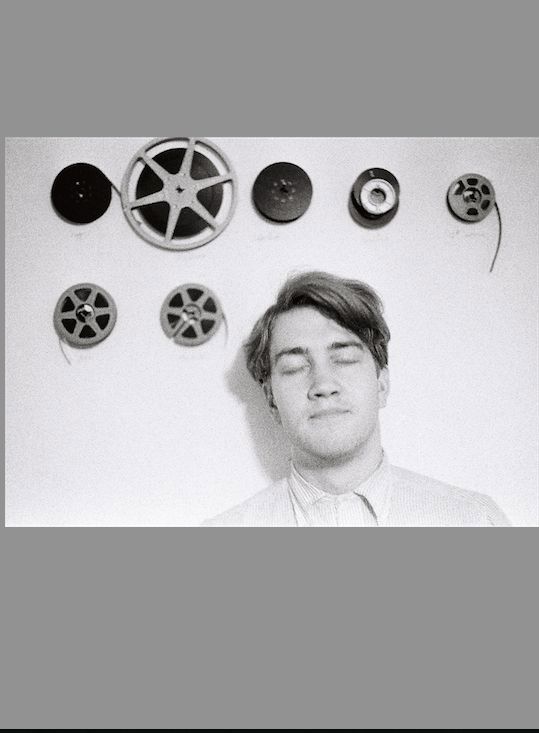
Figure 1: David Lynch with film reels, ca. 1966 / Photo: C. K. Williams
David Lynch: The Unified Field at The Pennsylvania Academy of the Fine Arts (PAFA), on view from September 13, 2014 through January 11, 2015.
¤
HAVE YOU SEEN Twin Peaks? Nearly 25 years after the show first aired in April 1990, the unsettled fates of FBI Special Agent Dale Cooper, Annie Blackburn, Audrey Horne, and the other denizens of the town of Twin Peaks, Washington, continue to haunt our televised imagination. With its third season in jeopardy (and, in the end, never to materialize), the David Lynch–directed final episode of Twin Peaks concluded the series on June 10, 1991 with a cliffhanger. It is, we might say, a permanent cliffhanger, wherein virtually all of the show’s once-beloved characters face impending death. The narrative arc has never since fallen back to earth — though the news, now, is that it will do so in 2016.
The serial's initial question of “Who Killed Laura Palmer?” preoccupied the viewing public for a few heady months in the spring and fall of 1990. This inaugural mystery resolved itself, shockingly, and with unprecedented violence, part way through the second season. (Please note that I take no pleasure in presuming general knowledge of this revelation; I will not name Laura’s killer here. Go and watch the show.) With the show’s cancellation in 1991, however, the cliffhanger's mysteries remained unsettled. What happens in the end? As a result, the unresolved suspense of the final episode has lingered on for more than two decades.
Twin Peaks has often been cited as the model for a new kind of television serial, a stylized, supernatural domestic crime thriller that has since yielded the likes of The X-Files, Lost, Desperate Housewives, Breaking Bad, and True Detective, among others. The show’s lingering hold on the popular imagination has also become an evidentiary case for fan-driven campaigns to preserve beloved TV shows against the corporate axe of cancellation: Friday Night Lights, Firefly, and Arrested Development owe their prolongation to the activist marketplace of devoted viewers. Yet there’s something more to the persistence of fan-driven attention to Twin Peaks than the mere persistence of fans. Twin Peaks offers a model for other shows because it marks the historical point at which a television serial fully disclosed its ambition as an art form.
Nowhere is this ambition more pronounced than in the series finale, for it is here that the show’s plot both registers and defies the fact of its cancellation. In place of valedictory closure we find instead a cliffhanger: a contrivance every bit as manufactured, and every bit as foreign to the lives of the fictional characters, as the executive decision to axe the show. It is a transcendental gesture. While native to the serial form — cliffhangers are, after all, the soul of installment fiction — the ending breaks with the logic of its continuation. We are instead thrown back into the conundrums of the Twin Peaks universe itself. Instead of a continuing series, we have a closed circuit, a potentially infinite loop. This, for David Lynch, is art.
¤
What happens in the end? In a television series shot through with contradictions, we should have become accustomed to such uncertainty. The show’s staggering acts of violence are laced with Lynch’s characteristically dreamlike images, along with scenes of everyday bathos and even sweetness. Some of the most haunting images in the show are disarmingly humane: by the end of the pilot episode, we know that Deputy Andy cannot face the crime scene without bursting into sobs. It’s a moving image: we witness the all-too-common spectacle of a murdered girl through the decidedly uncommon spectacle of Deputy Andy’s unprofessional grief. All the same, the show’s ending remains unsettling. We are left in painful suspense about the fates of individual characters, as well as the show’s tangled cosmology. How appropriate it seems, upon reflection, to end a television series about the infinite cruelty of murder by making its viewers yearn as well as mourn.
It is, in part, an epistemological anguish. Like any good gothic tale of small-town iniquity, Twin Peaks opens up to vast networks of conspiracy, drug trafficking, prostitution, incest, and serial murder — as well as to the hazier machinations of the “Black Lodge” and its supernatural inhabitants. Beneath the bucolic surface of the titular logging town lurks its seething mirror image; this double harbors its own otherworldly complement in turn.
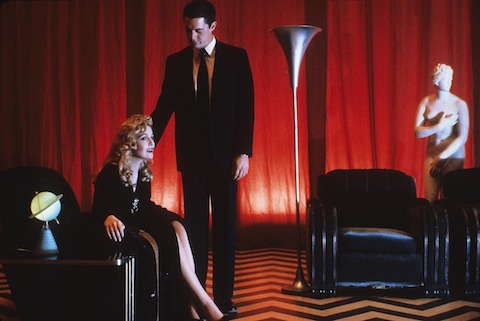
Figure 2: The Red Waiting Room. Film Still from Twin Peaks: Fire Walk with Me. Paramount Pictures, 1992.
In dreams, Dale Cooper meets the denizens of the mysterious Black Lodge: the dancing, oracular Man From Another Place; the leering, terrifying BOB; and the elegant presence of someone who looks “almost exactly like Laura Palmer.” A dream sequence early in the series implies that the truth of this otherworldly place might eventually be disclosed: it takes place 25 years later, we are told. “I’ve got good news,” says the Man from Another Place. “That gum you like is going to come back in style.” Measured against the calendar of the show’s initial airing, the moment for that good news is fast approaching. Fans of the show, taking the 25-year timeline literally, have been clamoring to bring the show back to television. Will the “good Dale” escape the Black Lodge? What becomes of Annie, of Audrey, of Leo Johnson, of Benjamin Horne? It’s curious to think that a return to television might somehow address these concerns, but fans will have their due: Lynch and series co-creator Mark Frost have just announced a new series of 9 episodes, to air on Showtime in 2016. We would be mistaken, though, to expect 25 years of tireless suspense to vanish with a snap of the fingers. The curtains will rise once again on Twin Peaks, but David Lynch will keep us hanging.
After all, the release of Twin Peaks: Fire Walk with Me as a feature-length filmin 1992 yielded no such closure. Produced shortly after the cancellation of the television series, the film was notoriously booed upon its release at the Cannes International Film Festival, and pilloried by critics in turn. And perhaps with reason: rather than resolving or even addressing the show’s abrupt conclusion, the film almost entirely circumvents it. It takes place instead in the days before Laura Palmer’s death, fleshing out details alluded to in the show’s original pilot. Only a handful of supernatural intrusions remind us of the series cliffhanger and its harrowing propositions. Otherwise, the film occupies an entirely different genre, as well as a different medium; with many of the television characters missing from the final cut, the film abandons the expansive social world of the city-mystery genre, and instead closes in on metaphysical tragedy.
The move is an explicit one. The film’s opening credit sequence heralds the betrayal of its television origins, as critics have noted: we watch as an abstract pattern of dancing shapes resolves into the static noise of a television screen. An axe smashes the set; a woman screams. We can only presume that she, along with our televised memories, is about to be murdered. The 1992 film refuses to prolong the life of the cancelled series. It instead introduces a new set of terrors and curiosities that occupy the final days of Laura Palmer’s tragic life. The film is all the more harrowing as a result; we shudder at the inevitability of Laura’s fate, but we also continue to long for answers.
¤
On the occasion of two major retrospective events in David Lynch’s career, we can return anew to Twin Peaks, in advance of the Showtime series. In late July, CBS and Paramount Pictures released Twin Peaks: The Entire Mystery on Blu-ray; compiling the television series together with the film, the set includes 90 minutes of long-rumored “missing pieces” deleted from the final cut of Fire Walk with Me, among other features.
The second event is all the more comprehensive. On September 12, the first major US exhibition of David Lynch’s art opened at the Pennsylvania Academy of Fine Art (PAFA) in Philadelphia; the career retrospective of Lynch’s paintings, drawings, and early short films runs through January 11, 2015.
Do the “missing pieces” of the Blu-ray resolve the lingering questions in Twin Peaks, whether the fate of its characters or the workings of its otherworldly cosmology: the Black Lodge, the Red Waiting Room, and BOB? The box set is terrific, but it remains steadfast in its refusal to do so.
The answers lie instead, I propose, in Lynch’s work as a visual artist. The current retrospective at PAFA, where Lynch began training as an art student in 1965, shifts the terms by which we approach Twin Peaks and its fictional universe. The exhibition, David Lynch: The Unified Field, discloses the elementary particles and fundamental underlying forces that animate Lynch’s body of work. Much like the town of Twin Peaks itself, the exhibition reveals Lynch’s career as a Hollywood filmmaker to be grounded in his years as a young art student in Philadelphia. For Lynch, the California sunshine always gives way to the grit and violence epitomized by late-1960s Philadelphia, less a City of Brotherly Love than “the sickest, most corrupt, decaying, fear-ridden city imaginable,” as Lynch once put it. It was here, the exhibition demonstrates, that “something clicked” in Lynch’s work. (Unsurprisingly, Lynch’s own character from Twin Peaks, Gordon Cole, heads up the Philadelphia branch of the FBI. It all comes back to Philadelphia.)
More broadly, the PAFA show documents the tenacity of Lynch’s continuing work as a visual artist across a variety of media. Impressively curated by Robert Cozzolino, The Unified Field makes a case for considering Lynch as “an artist who happens to make film as part of his expression. His identity as an artist is key to his work,” Cozzolino writes in his catalogue introduction. “His films are dependent on, flow from, and are inseparable from his identity as a visual artist.” Does this “key” help us unlock the mysteries of Twin Peaks?
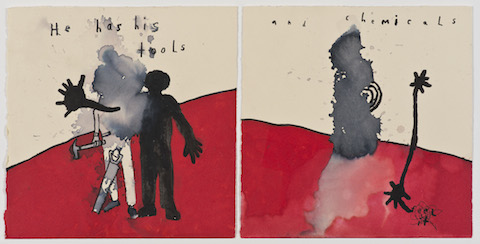
Figure 3: David Lynch, He Has His Tools and Chemicals, 2013
Ink on paper, 8 x 16 in.
Collection of Frank and Berta Gehry
It does, and to a surprising extent. The PAFA show presents David Lynch as an artist for whom the nature of an artistic medium strongly influences the nature of the work produced in it. Whether working in paint, plaster, cardboard, or wood — or in sound design, photography, TV, or film — Lynch’s art dwells on the enigmas of its medium. He Has His Tools and Chemicals, a blotted ink drawing tells us. With its ominous implicit question — tools for what purpose? — the drawing offers a self-portrait less of the artist than of ink drawing itself, demonstrating its capacity to depict as well as to blot out, obscure, and bleed. The drawing thus extends from its own “tools and chemicals,” the inner life of its materials. To this end, Cozzolino attributes the “primal scene” of Lynch’s multimedia career to an epiphany that took place at PAFA in 1967. While working in his studio one night, the door between painting and filmmaking flew open. As Lynch recalls: “I’m looking at the painting and from the painting came a wind. And the painting began to move. Two things: a wind came from the painting, and the painting began to move. And I’m looking at this and hearing this and I say, ‘Oh, a moving painting.’”
Lynch’s career in the moving picture industry extends from this visionary moment. Yet it is not for the sake of motion alone. Note how specific Lynch is about differentiating the two parts of the phenomenon: a wind came from the painting, and the painting began to move. The point is not simply to create the illusion of movement by animating a still life; a wind came from the painting. This makes all the difference. David Lynch’s early experiments in moving paintings were hybrid in form and subject matter, dwelling at the interstices of static and animate art. In Lynch’s work, paintings can come to life; film, in turn, can bring that life to an end — or arrest it in a state of intolerable suspense.
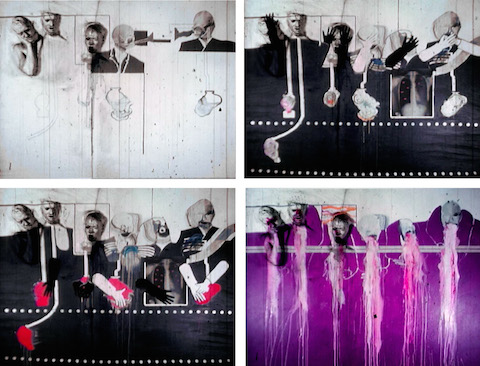
Figure 4: David Lynch, Six Men Getting Sick, 1967
Film stills
Courtesy of the artist
Featuring over 90 paintings and drawings dating from 1965 to the present, The Unified Field offers a comprehensive overview of Lynch’s understanding of the way paintings can move, and the way they can move us. In short, it gives us new insight into the artist’s relationship to the inherent properties of a medium, its capacity for life. It devotes an entire room, for instance, to the immediate result of Lynch’s 1967 epiphany. Entitled Six Men Getting Sick, Lynch’s first experiment in film yielded a one-minute-long hand-drawn animation of six male figures, whose exposed digestive tracts fill with angry fluid, glow red, and spew forth their contents. In anticipation, their faces grimace in anguish, a siren wails, and the word “sick” flashes upon the screen. Six Men Getting Sick is more than a film; in order to display the animated picture, shot on film at two frames per second, Lynch projected the loop against a three-dimensional resin screen built specially for the purpose, which contains two plaster casts of Lynch’s face and one of his friend and fellow PAFA student Jack Fisk. The PAFA exhibition recreates the installation for the first time since 1967; in witnessing the film loop brought back to life, so to speak, we can see the full register of Lynch’s early ideas about “moving paintings.” Far more than a wind blowing through a picture, Six Men Getting Sick offers a purgative expression of organic life that confronts the film’s subjects and spectators alike with the demands of visceral experience. To live, Lynch suggests, is also to feel sick.
Like Lynch’s subsequent cinematic and plastic work, Twin Peaks extends from the premise that this life, this sickness, is reversible. The innumerable artistic elements that make up a Hollywood film or television series — scripts, actors, sets, sound design, music, lighting editing — can be brought together to synthesize life. But they can also be divorced, their synthesis interrupted: when this happens, the medium rears its head within the cinematic fiction.
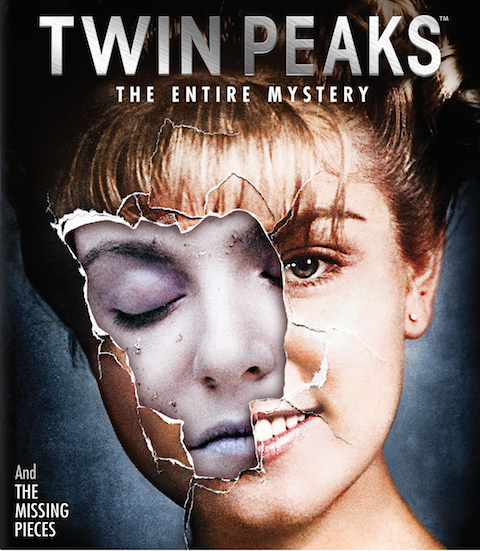
Figure 5: Twin Peaks: The Complete Mystery, 2014.
The formal demands of the artistic medium come to determine the fates of fictional lives. Such intrusions are intrinsic to the imaginative universe of Twin Peaks. Famously, the central figure of BOB is the result of cinematic accident, whereby set dresser Frank Silva was incorporated into the show after getting caught on camera in an early shot from the pilot episode. (The edited “international pilot episode,” featured in the box set, integrates this footage as part of its altered take on the show’s narrative arc). Film, with its history as a narrative medium, can bring things to life, but it can also kill them off.
Another of Lynch’s early films, The Grandmother (1970), likewise on view at PAFA, features an abused boy who conjures up a benevolent grandmother, grown from seed, whose kindness enables him to conceive of taking revenge upon his parents. Yet like any plant, the grandmother cannot survive in a dark environment, and begins to succumb to her organic conditions. She loses her breath, fights for air, and fades. The wind blows, but the wind also blows us away.
Yet as Lynch well knows, even such acts are reversible within the cinematic medium: in a film, no sooner does a character meet her conclusive end than the film, once ended and rewound, can start again at the beginning. Take Star Wars: Obi-Wan Kenobi always dies, but he’s always alive at the beginning of the film. We may not forget the pathos of an onscreen death, but we can re-watch the film anew each time. This is the premise, after all, of Fire Walk with Me: the corpse featured in the television serial, Laura Palmer (played by Sheryl Lee), comes back to life as the doomed protagonist of the feature film, only to be murdered once more before our eyes, this time with her own awareness of its unfolding inevitability. (We also witness her own struggle to resist the evil of the Black Lodge, as well as to comprehend it.) This is disturbing fare, whereby the “reversibility” of the cinematic medium brings little relief. The painting moves, but it does so restlessly, and with the airless inescapability of a closed circuit.
Throughout the course of its 30 televised episodes, Twin Peaks had already experimented with such exercises in serial reanimation and reprise. Though a corpse in the series pilot, Laura Palmer (or someone who looks like her) appears in Dale Cooper’s dreams in the Red Waiting Room. More dramatically, the actress who plays Palmer, Sheryl Lee, returns midway through the first season as Laura’s dark-haired cousin, Maddy Ferguson. As early as the second episode, the Man From Another Place anticipates the resemblance: “She’s my cousin. But doesn’t she look exactly like Laura Palmer?” Maddy’s likeness to Laura prompts a series of uncanny encounters amongst the victim’s bereaved family and friends; her virtual identity with the murdered girl she resembles is confirmed, monstrously, when she meets an identical fate. A giant appears in the sudden hush of a spotlight to tell us: it is happening again.
It is happening again. Twin Peaks was the television event that ushered in the age of recorded television; arriving at the height of VHS technology, the show was recorded and re-watched with unprecedented scrutiny. But the series already replays itself, its recursive logic rehearsing the way actors bind and unbind themselves to the characters in the Twin Peaks universe. The series already comprehends the possibilities of home video recording, in other words: the first episodes feature recordings of Laura Palmer’s face and voice. In replays of video and audio recording, the murdered girl endures in trace form. Later, in 1997, Lynch’s film Lost Highway would explicitly address the disturbing properties of “home video recording” as a technological medium. Analogously, early in Fire Walk with Me, Dale Cooper is terrified to catch sight of his own “live” image on closed-circuit television. Cooper sees his double image precisely because it is part of a closed circuit, we might say; the very purpose of closed-circuit television is to enable us to witness from a distance what is happening live. Cooper experiences this distance as an actual separation, a simultaneous replay of himself. Even a closed circuit has moving parts; and even television, no less than a painting, can be moving.
¤
How does The Unified Field retrospective at PAFA help us comprehend the lingering mysteries of Twin Peaks? Beyond merely consolidating David Lynch’s credentials as an cinematic auteur, it presents the work of an artist whose main insistence is to heed “the wind [that comes] from the painting.” Lynch’s genius, by this logic, has less to do with his own imaginative flights than with his sensitivity to the demands of this “wind,” this inspiration from the medium itself. Lynch’s artistic project is to give form to such demands. Twin Peaks is Lynch’s encounter with the mysteries of television, a medium that remains, after all, full of secrets. Perhaps we might consider the Black Lodge as the metaphysical complement to the television industry itself, a nebulous reality that machinates behind the scenes, invisibly bearing the power to sustain or cancel shows, careers, and livelihoods. Like the static noise that opens Fire Walk with Me, television always holds the power to cancel the signal and leave us with an empty box.This is not to say that Twin Peaks can be reduced to an allegory of the entertainment industry. On the contrary: as a corporate product of this industry, the fictional worlds that collide within the Twin Peaks universe draw their inspiration from such machinations, whose effects bear directly — once rendered in figural form — on the lives and deaths of its characters.
Twin Peaks ends with a cliffhanger, a formal convention of the medium. Yet the show was terminated for reasons that lay beyond the narrative logic of the series; it was axed by CBS on account of its precipitous drop in ratings after the revelation of Laura Palmer’s murderer. We might thus consider the cliffhanger as a formal response to this “transcendental” executive decision: the characters in the final scenes of episode 29 are neither alive nor dead. Or rather, in the manner of Erwin Schroedinger’s thought experiment for explaining quantum entanglement, they are both alive and dead simultaneously. In response to the network’s termination of the series, Lynch’s cliffhanger renders it hermetic, a closed circuit. As in the case of Schroedinger’s cat, the simultaneity of life and death renders literal a seemingly illogical paradox. For Schroedinger, the thought experiment models one of the elementary problems in quantum physics; for Lynch, the paradox defiantly exercises the possibilities of television as an artistic medium. To determine what happens in the end would require an intervention into the system, thereby bringing about the very result we wish to measure. This, I believe, is why Lynch doesn’t interfere with the conclusion of the TV series in Fire Walk with Me: some of the characters would have to die. He chose instead to resurrect Laura Palmer, presenting a moving picture of her final days. The real sorrow of the 1992 film, though, was that many of the beloved characters from the show never made it into the final cut: there is no Audrey Horne, no Pete or Catherine Martell, no Big Ed (not to mention that Donna Haywood, Laura’s best friend, was recast). Thus in its insistence on keeping the fictional universe in suspense, the film deprives us of the very characters whose fates concern us; they may not be “dead” in the story, but we miss them all the same. What is especially gratifying about The Entire Mystery is that its missing pieces give us new glimpses of many of these endearing characters: Big Ed, Deputy Andy and Lucy, Major Briggs, and others. It may not itself solve the cosmic mysteries of the Black Lodge, or resolve the fate of Special Agent Cooper, or let us know how Annie is. But it fleshes out the living world of Twin Peaks, and offers us more tools and chemicals for thinking about how the moving pictures continue to move us.
¤
Jonathan P. Eburne teaches Comparative Literature and English at Penn State University.
LARB Contributor
Jonathan P. Eburne teaches Comparative Literature and English at Penn State University. He is the author of Surrealism and the Art of Crime (Cornell UP, 2008), among other essays and edited volumes; he is founding co-editor of ASAP-Journal, the new scholarly journal of ASAP: the Association for the Study of the Arts of the Present. His longer essay on David Lynch's art, entitled "Fish Kit," is forthcoming next year in a volume called The Year's Work in the Oddball Archive (2015). He lives and works in central Pennsylvania.
LARB Staff Recommendations
A Pleasure to Burn
“I wanted to build a bookstore. The goal was simple: to found a cooperative; to think small. That way, we thought, nobody would get hurt. But someone...
The Oldest Story: Toward a Theory of a Dead Girl Show
Alice Bolin theorizes the commonality of the Dead Girl in Twin Peaks, True Detective, and Pretty Little Liars.
Did you know LARB is a reader-supported nonprofit?
LARB publishes daily without a paywall as part of our mission to make rigorous, incisive, and engaging writing on every aspect of literature, culture, and the arts freely accessible to the public. Help us continue this work with your tax-deductible donation today!